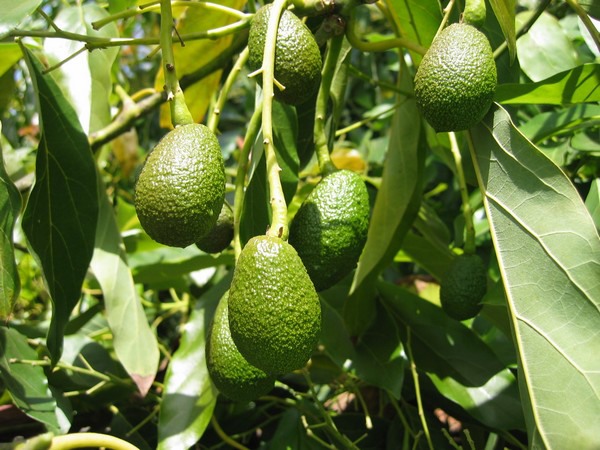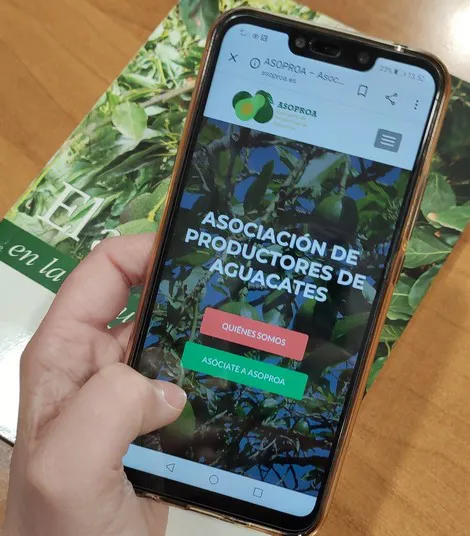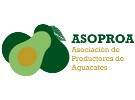The Region of Valencia is, after Andalusia, the second largest avocado production area in mainland Spain. "Avocado cultivation has been developing in this autonomous region for the last 11 or 12 years, but the biggest increase was recorded 4 years ago, and since then, it has continued to grow rapidly," says the president of the Association of Avocado Producers, ASOPROA, Celestino Recatalá.

"The three provinces of our region have areas with ideal conditions for the cultivation of this fruit. Most of the production is in Valencia, in the area of Camp de Morvedre, La Safor and La Ribera, but there are also crops in the north of Alicante and Castellon; in fact, the acreage devoted to avocado trees in the north of the region is also on the rise," says Celestino (photo).
"The figures provided by the Administration reveal that, at the moment, the Region of Valencia has 2,100 hectares planted with avocados, but we believe that these data do not reflect the reality, and since a significant increase is recorded each year, the total number of hectares in the region should be much higher." The fact, according to the president of ASOPROA, is that avocados have become a very interesting alternative for fruit producers in the region.
The succession of difficult campaigns for many producers of stone fruit, mandarins or kakis, which are the crops traditionally grown in the Region of Valencia, has been reflected in the development of the data on Surface Areas and Crop Yields of the Ministry of Agriculture, Fisheries and Food.
In 2021, the area devoted to all these crops fell when compared to the previous year. To be more precise, comparing the 2021 and 2020 reports, the area devoted to mandarin trees fell back by 2,056 hectares and that of kakis fell by 888 hectares. As for stone fruit, the apricot acreage fell by 632 hectares, and a total of 111 hectares of peaches and nectarines ceased to be cultivated.
"We believe that if the current price levels at origin are maintained, the avocado acreage will continue to grow in the Region of Valencia. In fact, the conditions in the current citrus campaign, which are not good, could convince many growers who were already considering it to finally make the switch."

"However, we at ASOPROA insist that you should not rush into making such an important decision. It is necessary to conduct a proper study to determine whether the area is suitable and the plot in particular meets the optimal conditions for cultivation, since switching to avocado production requires a high investment and it is necessary to ensure that it will yield the expected profitability," says Celestino Recatalá.
A national brand
The main variety grown by Valencian growers is the Lamb Hass, which, according to Recatalá, starts producing earlier and yields larger volumes. "However, over time we must be able to diversify the varieties we grow in the region in order to extend the production window and allow Spain to have a 9 month long campaign. To achieve this, it would be necessary to make a great effort to promote all the existing avocado varieties, since so far the most demanded and popular is the Hass."
"We also think that the whole sector should work together to develop a national brand with which to differentiate Spanish avocados and their quality from all other avocados that come to the European market from third countries."
ASOPROA's work
The Region of Valencia has the right climate and the necessary water to grow avocados, says Celestino. Water or, rather, the crop's water consumption is precisely a widely debated factor, but the fact is that the amount of water required for the cultivation of avocados is similar to that of other fruits, and is even lower than the amount needed for crops such as bananas or apples.

"However, we still have a lot to learn about the crop. Our goal is to achieve higher yields, to diversify in terms of varieties, and to better deal with the adversities and problems faced by this crop. That is why ASOPROA was born: to bring the sector together in all areas, and to spread information about this fruit's cultivation. The association is also trying to reach agreements with the Administration to ensure that, given the importance of avocado cultivation, it will open lines of research to facilitate the fight against aerial fungus, to improve agronomic techniques, such as pruning, and to be able to maximize the profitability in the plots."
"There are thousands of agricultural producers interested in this fruit and the association wants to make things easier for them and reduce the chance of them making mistakes," says Celestino Recatalá.
 For more information:
For more information:
Celestino Recatalá
ASOPROA
C/Guillem de Castro, 79
46008 Valencia, Spain
Tel.: +34 96 380 46 06
info@asoproa.es
www.asoproa.es
